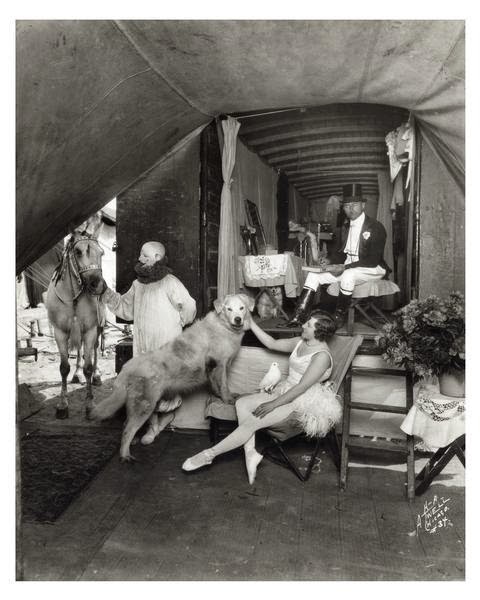After going to work for his uncle delivering and selling mattresses, Strong proved to be so adept at the job that he sold them faster than the mattresses could be manufactured, forcing him to take time off from the business for supply to catch up to demand. Already interested in showbusiness (Strong produced his first home town circus at the age of 15) he decided to head to Hollywood where he used his childhood friendship with Lucille Ball to get his first small acting roles. Without union membership, however, work was hard to come by and Strong was forced to make ends meet via other means. He is often credited with starting the "maps to the stars homes" industry and offered guided tours of Hollywood during this period.
It was in Hollywood that Strong began to venture more seriously into performing at backyard parties for his film industry friends. According to John's son, John Strong Jr. the circus started out as a literal dog and pony show, boasting one of each to its name. John's wife Ruth whom he married in 1948 took charge of training the animals and within six years, the circus had grown so large they needed to move onto several acres in Thousand Oaks CA to house the show's winter quarters and within 15 it was one of the largest shows touring the western United States.
Strong was well known for keeping both feet on the ground however, even in the midst of his success. Often his word was often all that was needed to book a date in many cases. As Strong wrote in a letter to his son in 1965, "always be honest... Always let your word be your bond... You never have to be the biggest but always operate a good, clean show and you will always be welcomed back." The John Strong Circus continued touring until 1982 when increased regulations and a law suit from the estranged family of a circus employee who died in an accident while in a company vehicle caused him to sell the show. He continued producing indoor shows from his home in California until his death in 1992. His son, John Strong Jr. took over the name, opening the John Strong Show, a sideshow and museum of oddities with his wife, Candy. Ruth Strong, often referred to as "the first lady of the circus" passed away in 2010. These days it's not uncommon to find former Strong employees "cutting up jackpots" (circus slang for trading stories) and reconnecting on internet forums when tracking down information on the show's history and among all of those renewed connections and reunions, one is hard pressed to find anyone who doesn't remember the aptly named "man with more friends than Santa Claus" with an enduring fondness.






